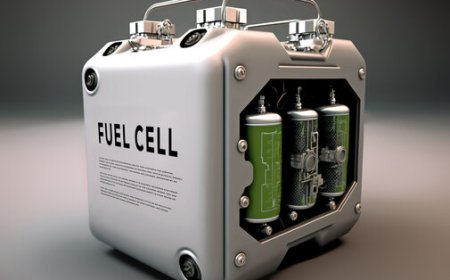Smart Automation in Pharma: How Cobot-Mounted AMRs Are Reshaping Palletizing

The Rise of Smart Automation in Pharma
Pharmaceutical manufacturing is an industry where precision, safety, and speed are critical. With the growing demand for faster and more reliable drug production and delivery, manufacturers are increasingly turning to smart automation solutions to modernize their operations. Among the most innovative trends is the integration of cobots (collaborative robots) with autonomous mobile robots (AMRs) a powerful combination that is proving to be a game changer in pharmaceutical palletizing.
One standout example of this technology in action is the deployment of a cobot-mounted AMR in a pharmaceutical palletizing process, detailed in a recent case study by Uchimura Robotics. This breakthrough implementation showcases how lean robotics can be leveraged to achieve safer, smarter, and more flexible production environments.
In this article, well explore how cobot-mounted AMRs are reshaping palletizing in pharma, break down the core principles of lean robotics, and walk through the real-world impact of such systems from floor-level improvements to enterprise-wide efficiency gains.
What Are Cobots?
Cobots are designed to work safely alongside human workers. Unlike traditional industrial robots that are often caged off for safety, cobots are equipped with sensors and programming that allow them to operate in shared spaces without harming people. They are ideal for repetitive tasks like packing, lifting, and quality checks.
What Are AMRs?
Autonomous Mobile Robots (AMRs) are self-navigating robots that move materials across the factory floor without the need for human intervention or fixed pathways. They use cameras, sensors, and intelligent software to detect obstacles and plan routes in real-time.
The Innovation: Mounting a Cobot on an AMR
Mounting a cobot on top of an AMR takes both technologies to the next level. The cobot performs precise tasks like stacking boxes on a pallet while the AMR gives it mobility, allowing it to move between stations. This kind of flexible, intelligent palletizing system brings agility, safety, and efficiency to pharmaceutical operations in a way that static systems cannot.
The Problem with Traditional Palletizing Systems in Pharma
Historically, pharmaceutical palletizing has relied heavily on either manual labor or traditional industrial robots. Both approaches have serious limitations:
-
Manual palletizing is slow, labor-intensive, and risky due to repetitive strain injuries.
-
Fixed robotic arms are expensive to install and difficult to reconfigure. They also require a large footprint and physical barriers for safety, which isnt ideal in cleanroom environments.
Pharma companies also deal with frequent product changeovers, limited floor space, and high regulatory standards. This makes traditional systems less adaptable and more expensive in the long run.
Lean Robotics: The Smarter Way Forward
The concept of lean robotics borrows from lean manufacturing principles, which aim to reduce waste, improve flow, and deliver more value with fewer resources. In the context of robotics, lean automation is all about:
-
Using flexible and modular systems
-
Minimizing human labor on repetitive tasks
-
Reducing downtime and improving changeover speeds
-
Enhancing worker safety without sacrificing productivity
When cobots and AMRs are combined using a lean robotics framework, the result is an adaptable and efficient system tailored to dynamic pharmaceutical needs.
Real-World Application: The Uchimura Robotics Case Study
In one of the most insightful examples of this approach, Uchimura Robotics showcases a successful cobot-mounted AMR deployment in pharmaceutical palletizing. The goal was to automate the process of transferring packed boxes from production lines to pallets for shipment.
Heres how they did it:
1. Flexible Deployment
Instead of installing multiple robotic palletizing stations, the solution used a mobile cobot-AMR unit that could service several packaging lines. This drastically reduced the space required and made reconfiguration easy.
2. Human-Robot Collaboration
The system was designed for shared environments, where cobots work side-by-side with human staff. Workers focused on high-value tasks, while the cobot handled lifting, stacking, and transporting duties.
3. Lean and Scalable Design
The robot was programmed using a lean robotics approach, allowing for rapid deployment, short training times, and scalable production. It could adapt to different product sizes and palletizing patterns with simple software updates.
How It Works: A Step-by-Step Look
Lets walk through the typical process of a cobot-mounted AMR palletizing system:
-
Pick-Up Stage:
The AMR navigates to a packaging line, where the cobot picks up boxes. -
Stacking:
The cobot arranges the boxes on a pallet using pre-defined stacking patterns that can be adjusted based on product type. -
Transportation:
Once the pallet is full, the AMR moves it to a shipping area or storage location. -
Return & Repeat:
The AMR returns to a new packaging line or restarts the cycle.
This process removes the need for forklifts, conveyors, or fixed palletizing stations saving both space and labor.
Key Benefits for the Pharmaceutical Industry
The advantages of implementing a cobot-AMR palletizing system, especially in regulated environments like pharma, are substantial:
Safety and Cleanroom Compliance
Cobots reduce human handling in cleanroom zones, helping maintain hygiene standards. AMRs also reduce foot traffic, limiting contamination risks.
Adaptability to Product Variants
Pharma manufacturers often deal with varying package sizes and shapes. With easy reprogramming, the cobot can adapt to new formats in minutes.
Space-Saving and Mobile
Because the system moves to where its needed, it eliminates the need for fixed palletizing cells. This is ideal for smaller plants or multi-line facilities.
Improved Labor Allocation
Rather than replacing workers, automation supports them by eliminating the most physically demanding tasks, allowing staff to focus on quality control and oversight.
Faster Time to Market
By streamlining palletizing, companies reduce delays in the last stage of production, helping get medicines to market more quickly.
Challenges and Considerations
While the benefits are significant, there are a few things pharmaceutical companies need to consider when deploying cobot-AMR solutions:
Initial Investment
While more affordable than traditional robots, cobot-AMR setups still require upfront investment in hardware, software, and integration.
Training Requirements
Staff must be trained not only to operate the cobot and AMR, but also to handle basic troubleshooting and reprogramming for different palletizing formats.
Regulatory Compliance
All robotic systems in pharmaceutical environments must comply with strict safety and documentation standards. Systems must be validated to ensure product integrity.
A Glimpse Into the Future
The future of pharmaceutical logistics and packaging is flexible, mobile, and intelligent. The use of cobots and AMRs is only expected to grow as technology becomes more advanced and more affordable.
Here are some trends to watch:
AI-Powered Robotics
Cobots will increasingly use AI to learn and optimize stacking strategies, detect product irregularities, and predict maintenance needs.
Edge and Cloud Integration
Robotic systems will be connected to enterprise resource planning (ERP) and warehouse management systems (WMS), allowing for real-time coordination and monitoring.
Multi-Task Robots
Instead of just palletizing, cobots may also take on secondary roles like quality inspection or labeling, increasing return on investment.
How to Get Started with Lean Robotics
For pharmaceutical companies considering this shift, its important to follow a structured path:
-
Assess Your Needs
Identify which packaging or palletizing processes could benefit from automation. -
Start Small
Deploy a pilot unit like a cobot-AMR in one area, learn from it, and expand gradually. -
Train Your Team
Equip your staff with the knowledge to operate, adjust, and maintain the system. -
Partner with Experts
Work with experienced providers like Uchimura Robotics to guide implementation and ensure lean robotics principles are followed.
In fact, their detailed pharmaceutical palletizing case study offers a valuable blueprint for companies looking to make the transition.
A Leaner, Safer, Smarter Pharmaceutical Future
As the pharmaceutical industry continues to grow in complexity and urgency, the pressure to innovate is higher than ever. Traditional automation systems no longer meet the flexibility, safety, and adaptability requirements of modern pharma manufacturing. Thats where cobot-mounted AMRs come in providing an agile, intelligent, and scalable way to automate palletizing.
By combining the collaborative power of cobots with the mobility of AMRs and the efficiency mindset of lean robotics, companies can transform their packaging and logistics operations from rigid to responsive. Its not just about keeping up with technology its about building smarter factories for the future of healthcare.
Whether you're running a small packaging line or a multi-product pharmaceutical facility, the time to explore smart automation is now.





























